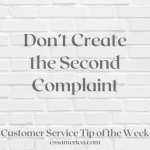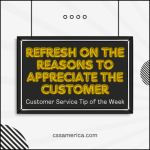 In the Forbes article This 15-Year-Old Absolutely Nails What ‘Patient Centered’ Is – And Isn’t, the author addresses patient satisfaction (or a lack thereof) in today’s hospitals. He shows the video of a 15 year old patient who discusses her complaints about her current inpatient stay and her suggestions to make it a better experience.
In the Forbes article This 15-Year-Old Absolutely Nails What ‘Patient Centered’ Is – And Isn’t, the author addresses patient satisfaction (or a lack thereof) in today’s hospitals. He shows the video of a 15 year old patient who discusses her complaints about her current inpatient stay and her suggestions to make it a better experience.
She talks about the need for sleep, the need to be a part of discussions about her care, and the desire to feel cared about as a person. A key quote is “I am a patient – and I need to be heard!”
Whether we’re working with our healthcare clients or those clients in other industries, this desire of customers to be heard can be overwhelming at times. The desire is often so strong because too many organizations are too deaf to the voice of the customer. Too many organizations strategize on what customers want instead of asking the customer. Too many leaders are focused on the product, service, or technical aspect of what they do that they lose sight of the people for whom they provide those services.
Too many hospitals preach customer care but haven’t taken the cultural approach to trying to embed the customer service mindset into every fabric of the organization – from hiring to training to processes to the facility to leadership modeling and internal communications.
They react to the complaints, they review the quarterly patient satisfaction survey results, but they don’t work to create a culture that encourages the ongoing engagement of the customer.
When you think of how to deliver a great customer experience, start with creating a culture of individuals and teams whose collective heart is focused on caring for its customers, and conveying that care for its customers.
Patient Satisfaction…from a Child’s Mouth to Our Ears.
Did you like this post? Here are other Healthcare-related posts:





















